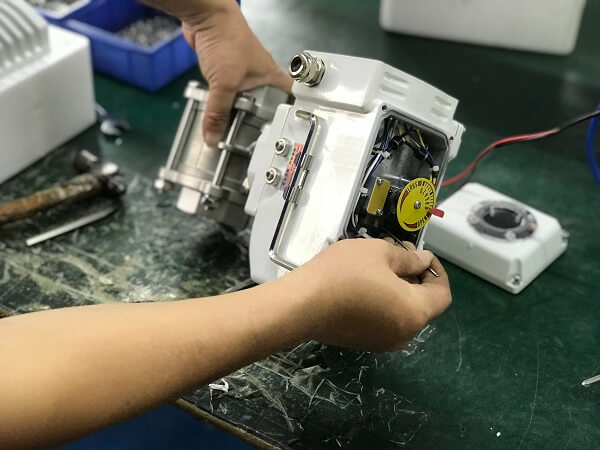Normally, if the valve can’t close tight, first confirm whether the valve is closed or not. If the valve still leaks after it has been closed, check the sealing surface. Some valve seals are detachable, so take them out for grinding and test again. If it is still not strict, then you must return to the factory to repair or replace the valve, so as not to affect the normal use of the valve and the occurrence of working conditions and other problems.
If the valve can’t fully be closed, you should first find out where the problem is, and then solve the problem according to the corresponding method.
There are several reasons why the valve can’t fully close:
(1) Impurities are stuck on the sealing surface, and debris is deposited at the bottom of the valve or between the valve flap and the valve seat;
(2) The stem thread is rusted and the valve cannot be rotated;
(3) The sealing surface of the valve is damaged, causing leakage of the medium;
(4) The valve stem and the valve disc are not well connected so that the valve disc and the valve seat are not in close contact with each other.
The treatment of valve can’t fully close:
1. There are impurities stuck to the valve sealing surface
Sometimes the valve is suddenly closed, and there may be impurities stuck between the sealing surfaces of the valve. At this time, the force is forcibly closed. The valve should be slightly opened, and then try to close it. Try it again and again, generally, it can be eliminated. Otherwise, it should be Check again. The quality of the media should also be kept clean.
2. The stem has rusted
For valves that are normally open, when the valve is accidentally closed, the valve stem thread has rusted, and the valve may not be tight. In this case, the valve can be repeatedly switched and closed, and the bottom of the valve body is struck with a small hammer so that the valve can be closed and the valve can be repaired without grinding.
3. The valve sealing surface is destroyed
In the case where it is tried to close the switch many times, the sealing surface is damaged, or the corrosion, the grain scratches in the medium, etc. damage the sealing surface, and this situation should be reported for repair.
4. The valve stem and the valve flap are not connected well.
In this case, it is necessary to lubricate the valve stem and the stem nut to ensure flexible valve switching. It is necessary to have a formal maintenance plan to strengthen the maintenance of the valve.
COVNA’s products have a 1-year warranty. If have any issue, please contact us. Our engineer will help you to resolve the issue quickly.
Post time: Jul-28-2021





